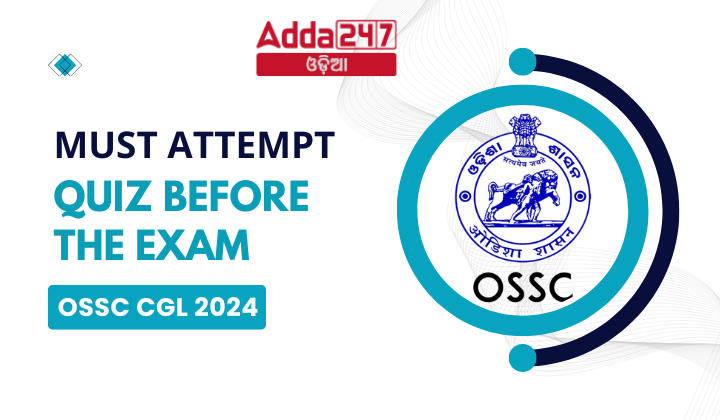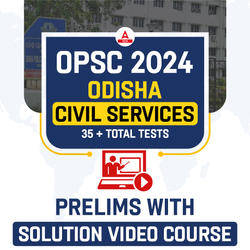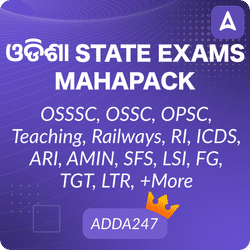Preparing for the OSSC CGLRE (Odisha Staff Selection Commission Combined Graduate Level Recruitment Examination) requires a well-rounded understanding of key topics. To succeed, candidates should focus on mastering questions from areas like General Awareness, Arithmetic, Logical Reasoning, and Computer Knowledge. General Awareness involves current affairs, Odisha history, and basic knowledge of Indian politics and economy. Arithmetic questions focus on problem-solving skills, covering algebra, geometry, and data interpretation. Logical reasoning tests a candidate’s analytical and critical thinking abilities, while Computer Knowledge emphasizes basic operations and functions. Practice and understanding these topics will help boost your confidence and ensure a high score.
Must attempt Quiz Before the Exam for OSSC CGL
- Question: The following table shows the percentage of students passing out of four colleges (A, B, C, and D) over four years. Which college had the highest average percentage of students passing over the four years?
College Year 1 Year 2 Year 3 Year 4 A 80% 75% 70% 85% B 70% 80% 75% 80% C 75% 70% 80% 70% D 85% 75% 70% 75% A) A
B) B
C) C
D) D
Answer: B) B
Solution: Calculate the average percentage passing for each college and compare.
Average for A =(80+75+70+85)/4=77.5
Average for B =(70+80+75+80)/4=76.25
Average for C =(75+70+80+70)/4=73.75
Average for D =(85+75+70+75)/4=76.25
College B has the highest average percentage of students passing over the four years1. - Question:In a survey, 60% of people like coffee, 40% like tea, and 20% like both coffee and tea. What percentage of people like neither coffee nor tea?
A) 20%
B) 30%
C) 40%
D) 50%
Answer: A) 20%
Solution: Use the principle of inclusion and exclusion.
Percentage liking coffee = 60%
Percentage liking tea = 40%
Percentage liking both = 20%
Percentage liking either coffee or tea = 60% + 40% – 20% = 80%
Percentage liking neither = 100% – 80% = 20% - Question: Study the graph and find the difference between the maximum and minimum sales of product P.
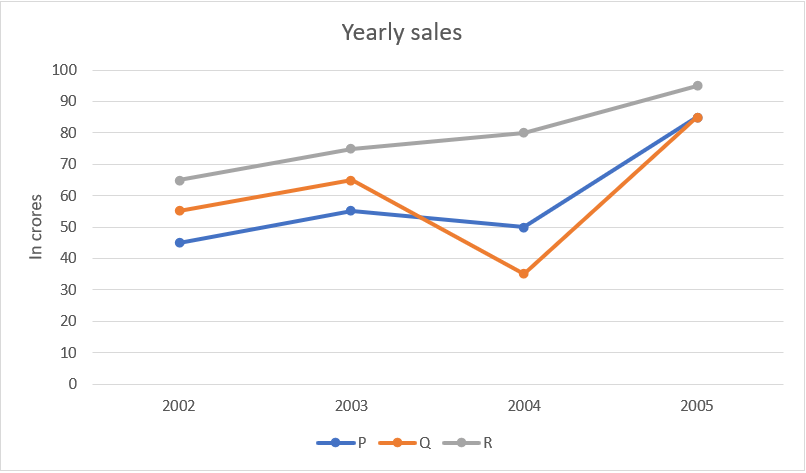 Study the graph and find what is the difference between maximum and minimum sales of p.
Study the graph and find what is the difference between maximum and minimum sales of p.
a) 40 crores
b) 45 crores
c) 55 crores
d) 65 crores
Answer: a
Explanation: The difference between the maximum and minimum sales:
The maximum sales = 85 crores
The minimum sales = 45 crores
The difference = 85 – 45 = 40 crores - Study the graph and find what is the difference between the maximum sales of p and minimum sales of q?
a) 40 crores
b) 45 crores
c) 50 crores
d) 55 crores
Answer: c
Explanation: The maximum sales of p = 85 crores
The minimum sales of q = 35 crores
The difference = 85 – 35 = 50 crores - The sales of p in 2004 is what percentage of the sales of q in 2002?
a) 110%
b) 11.11%
c) 90.90%
d) 95%
Answer: c
Explanation: The sales of p in2004 = 50 crores
The sales of q in 2002 = 55 crores
The required percentage = 50 / 55 * 100 = 90.90% - Question: Study the graph and find the total sales of products P and R in the year 2003 and 2004.
- A) 250 crores
- B) 260 crores
- C) 270 crores
- D) 275 crores
- Answer: B) 260 crores
-
answer: b
Explanation: The total sales = 75 + 80 + 55 + 50 = 260 croresadvertiseme
- Question: The sales of product P in 2004 is what percentage of the sales of product Q in 2002?
A) 110%
B) 11.11%
C) 90.90%
D) 95%
Answer: C) 90.90%
Solution
sales of product P in 2004 = 50
sales of product Q in 2002= 55
percentage =50/55*100= 90.90% - Question: The sales of product P in 2004 is what percentage of the sales of product R in 2005?
A) 180%
B) 190%
C) 47.75%
D) 52.63%
Answer: D) 52.63%
Solution: Calculate the percentage based on the given data
sales of product R in 2005 = 95
sales of product P in 2004= 50
percentage =50/95*100= 52.63% - The following pie chart shows the distribution of exports (in %) of five different countries. Total Exports = 1000 million units.
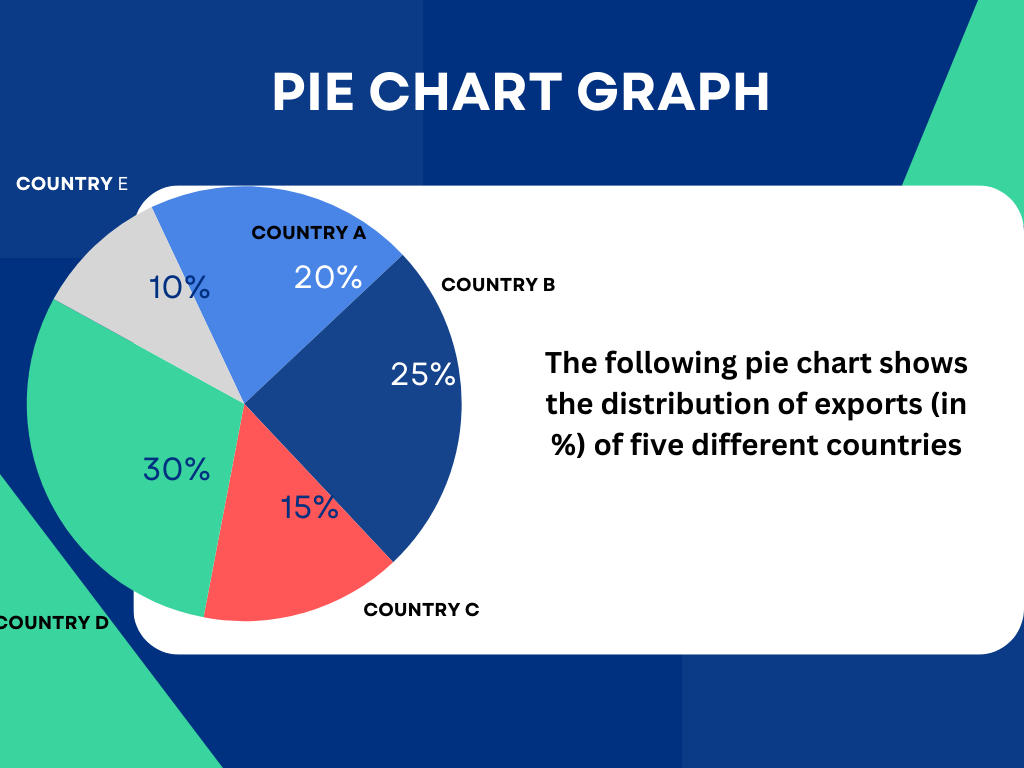
- Q1: If the exports from Country C increased by 20% and the total exports remain unchanged, what would be the new percentage share of Country C in the total exports?
(a) 16%
(b) 17%
(c) 18%
(d) 19%
Answer: (c) 18%
Solution:
Original exports by Country C = 15% of 1000 = 150 million units
Increase = 20% of 150 = 30 million units
New exports by Country C = 150 + 30 = 180 million units
New percentage share = 180/1000*100 - If Country A’s exports decrease by 10% and the total exports decrease by 5%, what will be the new percentage share of Country A?
(a) 18.5%
(b) 19%
(c) 19.5%
(d) 20%
Answer: (b) 19%
Solution:
Original exports by Country A = 20% of 1000 = 200 million units
Decrease in exports = 10% of 200 = 20 million units
New exports by Country A = 200 – 20 = 180 million units
New total exports = 1000 – 50 = 950 million units
New percentage share = 180/950×100 = 18.95% (approx. 19%) - Find the odd one out from the given set of numbers.
14, 28, 35, 46, 56, 84
a) 56
b) 84
c) 35
d) 46
Answer: d
Explanation: Here, the numbers 14, 28, 35, 56 and 84 are perfectly divisible by 7.
i.e.
14 ÷ 7 = 2
28 ÷ 7 = 4
35 ÷ 7 = 5
56 ÷ 7 = 8
84 ÷ 7 = 12
But the number 46 is not perfectly divisible by 7 (i.e. not a multiple of 7).
Hence, 46 is the answer. - Find odd one out from the given jumbled words.
LNUAIMMIU, ELEST, OPERPC, NMKOYE, INCKLE
a) NMKOYE
b) OPERPC
c) INCKLE
d) ELEST
Answer: a
Explanation: The Rearrangement of the words are : –
LNUAIMMIU ⇒ ALUMINIUM
ELEST ⇒ STEEL
OPERPC ⇒ COPPER
NMKOYE ⇒ MONKEY
INCKLE ⇒ NICKLE
Here the odd one out is MONKEY, as all others are names of the elements that exist in the nature. - Find the odd one out.
a) BEK
b) CFL
c) MPS
d) GJP
Answer: c
Explanation: Here, the letters given follows the below pattern
C + 3 ➔ F + 6 ➔ L
B + 3 ➔ E + 6 ➔ K
G + 3 ➔ J + 6 ➔ P
But MPS does not follow this pattern (i.e. M + 3 ➔ P + 3 ➔ S).
Hence, MPS is the answer. - Find the odd one out.
a) M
b) S
c) T
d) O
Answer: b
Explanation: Here, the letters M, O and T have exactly same mirror images.
i.e.
M | M
O | O
T | T
But, letter S has inverted mirror image (i.e. S | Ꙅ).
Hence, S is the answer. - In a certain code “CODE” is written as “DPEF”. How is “DEFENCE” is written in that code?
a) KWMCJFL
b) ELDFSAP
c) EFGFODF
d) HRAOSCV
Answer: c
Explanation: Here, each letter moves +1 from its original position.
i.e. for “CODE” C→D, O→P, D→E, E→F.
Similarly, for “DEFENCE” the code is EFGFODF.
Hence, the answer is EFGFODF. - In a certain code “SAND” is written as “UCPF”. How is “STONE” is written in that code?
a) SRLFE
b) UNSOP
c) UVQPG
d) UDLPQ
Answer: c
Explanation:
Each letter in the original word moves +2 positions forward in the alphabet:
S → U, A → C, N → P, D → F
Applying the same rule:
S → U, T → V, O → Q, N → P, E → G
Therefore, “STONE” is coded as “UVQPG”. - In a certain code “LION” is written as “MNHK”. How is “MONKEY” is written in that code?
a) BWKXSU
b) XDJMNL
c) FSHXIL
d) GQWPJS
Answer: b
Explanation:
Reverse the letters of the word and move -1 position back in the alphabet:
LION → NOIL, which codes to MNHK
MONKEY → YEKNOM, which codes to XDJMNL
Therefore, “MONKEY” is coded as “XDJMNL”. - In a certain code “CODE” is written as “DPEF”. How is “DEFENCE” is written in that code?
a) EFGFODF
b) HRAOSCV
c) KWMCJFL
d) ELDFSAP
Answer: a
Explanation:
Each letter moves +1 position forward in the alphabet:
CODE → DPEF
Applying the same rule:
DEFENCE → EFGFODF
Therefore, “DEFENCE” is coded as “EFGFODF”. - In a certain code “BASE” is written as “GUCD”. How is “COMMAND” is written in that code?
a) FCIDSLN
b) KOSFLKV
c) FPCOOQE
d) GNILDFW
Answer: c
Explanation:
Reverse the letters of the word and move +2 positions forward in the alphabet:
BASE → ESAB, which codes to GUCD
COMMAND → DNAMMOC, which codes to FPCOOQE
Therefore, “COMMAND” is coded as “FPCOOQE”. - When was the OSI Model proposed and by which organization was it published?
A) 1970s, International Electrotechnical Commission (IEC)
B) 1980s, International Telecommunication Union (ITU)
C) 1970s, International Organisation of Standardization (ISO)
D) 1980s, Institute of Electrical and Electronics Engineers (IEEE)
Answer: C) 1970s, International Organisation of Standardization (ISO) - What is one of the primary benefits of using the OSI Model in networking?
A) It enhances the speed of the internet
B) It simplifies the troubleshooting process by isolating errors at different levels
C) It increases the storage capacity of devices
D) It improves the battery life of network devices
Answer: B) It simplifies the troubleshooting process by isolating errors at different levels - Who proposed the concept that the OSI Model should be a seven-layer structure?
A) Vint Cerf
B) Bob Kahn
C) Charles Bachman
D) Tim Berners-Lee
Answer: C) Charles Bachman - Why did the OSI Model initially not gain much popularity?
A) It was too complex to implement
B) It did not support the Internet protocol suite
C) It was too expensive to adopt
D) It was not well-documented
Answer: B) It did not support the Internet protocol suite - How are the seven layers of the OSI Model divided?
A) Upper layer (host layer) and lower layer (network layer)
B) Physical layer and logical layer
C) Upper layer (host layer) and lower layer (media layer)
D) Transmission layer and reception layer
Answer: C) Upper layer (host layer) and lower layer (media layer) - What is one of the primary functions of the Physical Layer in the OSI Model?
A) Formatting data
B) Converting digital bits into electrical, radio, or optical signals
C) Managing connections between applications
D) Controlling data flow
Answer: B) Converting digital bits into electrical, radio, or optical signals - What does the Data Link Layer do to the input data for easier analysis?
A) Encrypts the data
B) Converts data into signals
C) Breaks the input data into frames
D) Compresses the data
Answer: C) Breaks the input data into frames - What is a key function of the Network Layer in the OSI Model?
A) Establishing sessions between computers
B) Managing data segmentation and desegmentation
C) Ensuring data is sent to its destination address
D) Formatting data for applications
Answer: C) Ensuring data is sent to its destination address - Which of the following is managed by the Transport Layer?
A) Data encryption
B) Data compression
C) Delivery of data packets
D) Establishing network connections
Answer: C) Delivery of data packets - What is a primary function of the Presentation Layer in the OSI Model?
A) Converting data into syntax or semantics that an application understands
B) Managing network addresses
C) Establishing and terminating connections
D) Controlling data flow and error checking
Answer: A) Converting data into syntax or semantics that an application understands - 3 pumps, working 8 hours a day, can empty a tank in 2 days. How many hours a day must 4 pumps work, to empty the tank in 1 day?
(a) 10
(b) 11
(c) 12
(d) 9
Answer: (b) 11
Explanation:It is said that 3 pumps work 8 hours a day.
These 3 pumps can empty a tank in 2 days.
8 hours a day means these 3 pumps work (2×8)
hours in 2 days, which means that they can empty a tank in 16 hours.
Now let us find the work done by these tanks in one hour.
They work 16 hours to empty a particular tank.
Work done by 3 pumps in one hour = 1/16.
1/16 is the work done by 3 pumps. Now let us find the work done by one single pump in 1 hour.
Work done by 1 pump in 1 hour = 1/(3×16)=148.
Now we need to find the work done by 4 pumps.
Work done by 4 pumps = 4×
work done by 1 pump = 4×1/48=1/12
Thus 1/12 is the work done by 4 pumps in 1 hour.
Thus the 4 pumps together take 12 hours to empty the tank in 1 day.
Hence, the whole tank is emptied by 4 pumps in 12 hours a day. - A and B started a business in partnership investing ₹20,000 and ₹15,000 respectively. After six months, C joined them with ₹20,000. What will be B’s share in total profit of ₹25,000 earned at the end of 2 years from the starting of the business?
(a) ₹5000
(b) ₹6000
(c) ₹7000
(d) ₹8000
Answer: (c) ₹7000
Explanation: The correct option is A Rs. 7,500
A’s share =20000×24=480000
B’s share=15000×24=360000
C’s share=20000×18=360000
Ratio of A,B,C ‘s share
=480000:360000:360000
=48:36:36
=4:3:3
Total ratio=4+3+3=10
B’s share=3/10×25000=7500 - A certain number of Cows and an equal number of men are going somewhere. If the number of legs walking on the ground is 70, how many cows are there?
(a) 10
(b) 12
(c) 14
(d) 16
Answer: (b) 12
Explanation: The correct option is C 14
Let there be x cows. Hence, there will be x men.
Then number of legs on the ground = 4x+2*x/2=70
5x=70
x=14
Thus, there are 14 cows. - Aniket buys an old scooter for ₹4700 and spends ₹800 on its repairs. If he sells the scooter for ₹6600, his gain percent is:
(a) 18%
(b) 20%
(c) 22%
(d) 25%
Answer: (b) 20%
Explanation: Calculate the gain percentage based on the cost price and selling price of the scooter.
The correct option is B5(5/11)%
C. P = Rs. (4700 + 800) = Rs. 5500
S.P = Rs. 5800.
Gain % = (300/5500×100)%=(60/11)% - If Hari walks at 14 km/hr instead of 10 km/hr, he would have walked 20 km more. The actual distance traveled by him is:
(a) 50 km
(b) 56 km
(c) 70 km
(d) 80 km
Answer: (b) 56 km
Explanation: Use the concept of relative speed to find the actual distance traveled.
Let the actual distance travelled be x km.
Then,
x/1=x+20/14
⇒14x=10x+200
⇒4x=200
x=50km - The average weight of 8 persons increases by 2.5 kg when a new person weighing 65 kg replaces one of them. What might be the weight of the new person?
(a) 76 kg
(b) 76.5 kg
(c) 80 kg
(d) 85 kg
Answer: (d) 85 kg
Explanation: Use the concept of average weight to find the weight of the new person.
Total weight increased = (8 x 2.5) kg = 20 kg. Weight of new person = (65 + 20) kg = 85 kg. - If 14 men can build a wall in 10 days, how many men are needed to build it in 4 days?
(a) 32
(b) 38
(c) 40
(d) 42
Answer and Explanation: (b) 36.
Calculate the total man-days required: 14 men×10 days=140 man-days.
Determine the number of men needed:
140 man-days/4 days=36 days
36 men are needed to build the wall in 4 days. - A train 180 meters long crosses a platform 220 meters long in 30 seconds. What is the speed of the train in km/hr?
(a) 60
(b) 48
(c) 72
(d) 75
Answer and Explanation: (b) 48 km/hr. Calculate the total distance covered and then find the speed of the train.
Calculate total distance: Distance covered = length of train + length of platform = 180 meters + 220 meters = 400 meters.
Convert time into hours: Given time = 30 seconds. Convert to hours = 30/3600=1/120hrs
Calculate speed: Speed = Distance/Time=400 meters*1/120 hours=48 km/hr
=48 km/hr.
Therefore, the speed of the train is 48 km/hr - Find the sum of first 15 terms of the arithmetic progression 10, 13, 16, …
(a) 435
(b) 450
(c) 465
(d) 480
Answer and Explanation: (c) 465.
First term 𝑎=10
Common difference
d=13−10=3
The formula for the nth term of an AP is:
𝑎𝑛=a+(n−1)⋅d
Use the formula for the sum of an AP: 𝑆𝑛=𝑛/2(2𝑎+(𝑛−1)𝑑) = 465 - Find the 10th term of the geometric progression 3, 6, 12, …
(a) 1536
(b) 1538
(c) 1540
(d) 1542
Answer and Explanation: (a) 1536. Use the formula for the nth term of a GP:
𝑎𝑛=𝑎⋅𝑟^𝑛−1=1536, after putting the values, the 10th term of the geometric progression 3, 6, 12, … is 1536 - When did the Indian Army contingent depart for the Multinational Military Exercise KHAAN QUEST?
(a) July 19, 2024
(b) July 25, 2024
(c) July 27, 2024
(d) August 9, 2024
Ans. (b) July 25, 2024 - What organization conducted the successful flight test of the Phase-II Ballistic Missile Defence System?
(a) ISRO
(b) DRDO
(c) HAL
(d) BARC
Ans: (b) DRDO - The Phase-II AD Endo-atmospheric Missile is designed to neutralize threats in which atmospheric regions?
(a) Exo-atmospheric
(b) Endo-atmospheric
(c) Both endo and low exo-atmospheric
(d) Upper-atmospheric
Ans: (c) Both endo and low exo-atmospheric - What is the dropout rate among Scheduled Caste boys at the secondary level in Odisha?
(a) 30.9%
(b) 35.3%
(c) 33.0%
(d) 29.4%
Ans: (c) 33.0% - What is the projected growth rate of Odisha’s economy for 2023-24?
(a) 6.5%
(b) 7.9%
(c) 8.5%
(d) 9.1%
Ans: (c) 8.5% - What is the labour force participation rate (LFPR) in Odisha for 2022-23?
(a) 51.2%
(b) 58.3%
(c) 61.3%
(d) 54.6%
Ans: (c) 61.3% - Why was Greenium recently in the news?
(a) India’s low greenium on sovereign green bond offerings
(b) Launch of new greenium investment fund
(c) Greenium tax incentives by the government
(d) Greenium achieving record high yields
Ans. (a) - Which of the following is an example of a project funded by green bonds?
(a) Highway construction
(b) Renewable energy projects
(c) Urban housing schemes
(d) Traditional fossil fuel plants
Ans. (b) - What recent action did India plan regarding the Clarion-Clipperton Zone?
(a) Ban on mining activities
(b) Apply for exploration licenses
(c) Establish a marine park
(d) Conduct marine biodiversity studies
Ans. (b) - What is the primary goal of the IndiaAI Mission?
a) To develop AI for defense purposes
b) To establish computing capacity of over 10,000 GPUs
c) To import AI technology from abroad
d) To focus on AI research only in the healthcare sector
Ans: b) To establish computing capacity of over 10,000 GPUs

